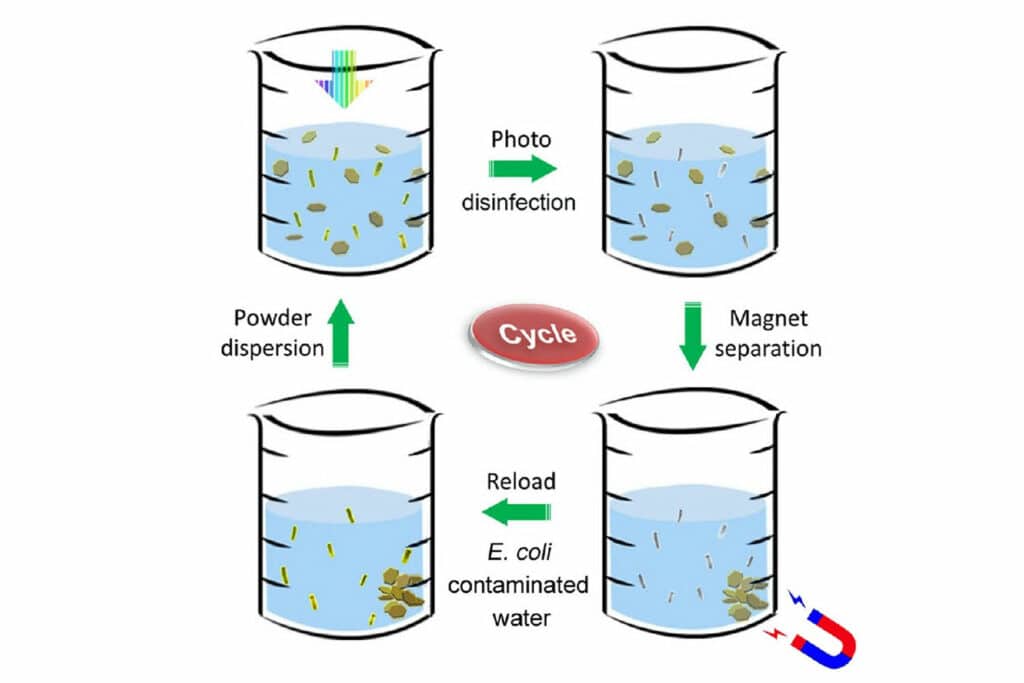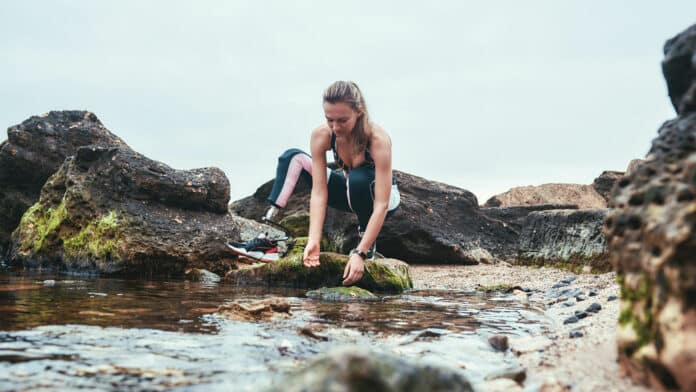Worldwide, about 1.2 billion people routinely drink water contaminated with disease-causing microbes. Conventional water-treatment technologies include chemicals, which can produce toxic byproducts, and ultraviolet light, which takes a relatively long time to disinfect and requires a source of electricity.
Now, scientists at Stanford University and SLAC National Accelerator Laboratory have invented a low-cost, recyclable powder that kills thousands of waterborne bacteria per second when exposed to ordinary sunlight. According to researchers, the discovery could be a significant advance for nearly 30% of the world’s population with no access to safe drinking water.
The new disinfectant is a harmless metallic powder that works by absorbing both UV and high-energy visible light from the sun. This sun-activated powder consists of nano-size flakes of aluminum oxide, molybdenum sulfide, copper, and iron oxide. All these materials are low cost and fairly abundant, plus only a small amount of the powder is required to treat a relatively large quantity of water.
Users start by stirring some of the disinfectant powder in bacteria-contaminated water, which is then exposed to direct sunlight. The molybdenum sulfide and copper catalyst absorb photons from the sun and then perform like a semiconductor/metal junction, enabling the photons to dislodge electrons. These freed electrons then react with the surrounding water, generating hydrogen peroxide and hydroxyl radicals which kill bacteria by seriously damaging their protective outer membranes.
The chemical byproducts generated by sunlight also dissipate quickly. Once the purification process is complete, any leftover hydrogen peroxide and hydroxyl radicals quickly break down into water and oxygen and are discarded within seconds. So you can drink the water right away.

The non-toxic powder is also recyclable. Thanks to their iron oxide content, the nanoflakes can be removed from water with an ordinary magnet after disinfection. The powder is then reloaded into another beaker of contaminated water, and the disinfection process is repeated.
In the test of the technology, the Stanford and SLAC team added the powder into a 200 milliliter (6.8 ounces) beaker of room-temperature water contaminated with about 1 million E. coli bacteria per milliliter. Within just 60 seconds of leaving it in real sunlight, no live bacteria were detected. In addition, the team was able to use the same powder 30 times to treat 30 different samples of contaminated water.
Researchers believe that their novel technology will facilitate revolutionary changes in water disinfection and inspire more innovations in this exciting interdisciplinary field. The powder might also be useful in wastewater treatment plants that currently use UV lamps to disinfect treated water.
“During the day, the plant can use visible sunlight, which would work much faster than UV and would probably save energy,” said senior author Yi Cui. “The nanoflakes are fairly easy to make and can be rapidly scaled up by the ton.”
The Stanford and SLAC team plans to test the new powder on other waterborne pathogens, including viruses, protozoa, and parasites that also cause serious diseases and death.
Journal reference:
- Tong Wu, Bofei Liu, Chong Liu, Jiayu Wan, Ankun Yang, Kai Liu, Feifei Shi, Jie Zhao, Zhiyi Lu, Guangxu Chen, Allen Pei, Harold Y. Hwang and Yi Cui. Solar-driven efficient heterogeneous subminute water disinfection nanosystem assembled with fingerprint MoS2. Nature Water, 2023; DOI: 10.1038/s44221-023-00079-4
